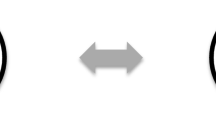Abstract.
How do we quantify division of labor? We review several fields (sociology, landscape ecology, statistics, information theory, and biogeography) that have been cognizant of these questions and been somewhat successful at answering them. We review fourteen indices for quantifying division of labor, sensu lato, which can be categorized into four families: Shannon’s index/entropy, Simpson’s index, geometric mean, and standard/absolute deviation (including coefficients of variation). We argue that those indices using matrix inputs will simultaneously quantify the interplay between all individuals and all tasks and will thus best capture the essence of division of labor.
Similar content being viewed by others
Author information
Authors and Affiliations
Corresponding author
Additional information
Received 29 March 2006; revised 16 November 2006; accepted 12 February 2007.
Rights and permissions
About this article
Cite this article
Gorelick, R., Bertram, S.M. Quantifying division of labor: borrowing tools from sociology, sociobiology, information theory, landscape ecology, and biogeography. Insect. Soc. 54, 105–112 (2007). https://doi.org/10.1007/s00040-007-0923-z
Published:
Issue Date:
DOI: https://doi.org/10.1007/s00040-007-0923-z




